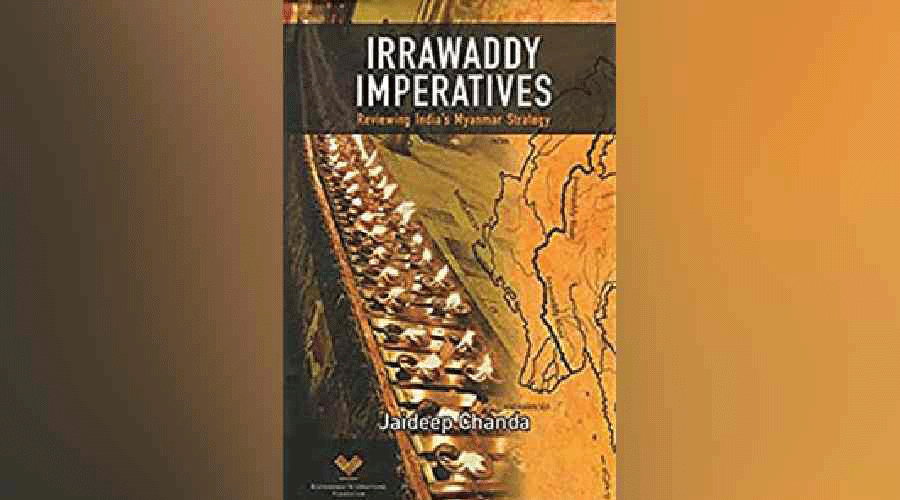Myanmar, or Burma as it was known then, was part of Indian consciousness before India’s Independence as it was a contiguous extension of the subcontinent. There were commercial and social links with Burma with many Indians settled there for business or employment.
However, the ties broke after 1947. The generation that had either seen the country or heard about the place from friends and family who lived there passed on. And Burma receded from the collective Indian mindspace.
Meanwhile, the country itself went through several waves of transformation and became increasingly insulated from the rest of the world. So, what remained was the love for Khow Suey, the national dish of Burma, Vipassana meditation of the Theravada School of Buddhism and sketchy knowledge about Aung San Suu Kyi’s struggles against the Myanmar Military Junta that won her the Nobel Peace Prize in 1991.
Many young Indians have learnt that King Thibaw, the last King of Burma, was exiled in Ratnagiri on the West Coast of India (while Bahadur Shah Zafar — the last Mughal Emperor was sent to Rangoon, now Yangon) from Amitav Ghosh’ novel, The Glass Palace.

Irrawaddy Imperatives: Reviewing India’s Myanmar Strategy by Jaideep Chanda; Pentagon Press; 470 pages; Rs 1,495. Sourced by The Telegraph
The stated aim of Jaideep Chanda’s book Irrawaddy Imperatives was to bridge this gap in “Myanmar Consciousness”, a term he has coined to describe the general state of awareness in the academic and policy-making circles.
The book is the product of an year-long Research Fellowship that Chanda undertook as part of his sabbatical from the Indian Army. What started as a study of the role of the military in stabilising boundary issues evolved into an examination of India-Myanmar relationship in a broader context.
The challenge faced by the author was maintaining the narrative without getting lost in research material. A task he has achieved with some degree of success by moving chunks of data and documents to appendices. However, it is still a scholarly tome that can intimidate a lay reader. Yet it contains a wealth of information and insights that would interest any serious observer of the geo-political theatre in the North-East of India.

Sandip Ghose. Sourced by The Telegraph
Chanda frames his thesis around the concept of borderland. Unique to the region is the nebulous nature of the border which is defined not by “control of the physical areas, rather the control of various elements that flow across these zones”. He, therefore, advocates an approach of “geographic realism” based on which the North-East, instead of being a problem, “can be a positive enabler in the India Myanmar calculus” giving a boost to the development of the entire region and India’s growth story. In doing so, the book examines the interplay between India’s North-East and Myanmar with special emphasis on Mizoram — given its influence on the conflict in the Rakhine State of Myanmar.
Chanda argues that the India-Myanmar defence diplomacy is one of the best examples of defence diplomacy in the region. According to him, the military to military cooperation has played a role in normalising the people to people relations across the borders. He traces the post-Independence history of defence diplomacy in shaping the bilateral relations between the two countries, including counter-insurgency operations. Yet, Myanmar often falls into “blind spots” in India — which can be attributed to the historically flawed construct of South Asia. This is reflected in the absence of Myanmar studies in most Indian Universities.
Any contemporary study of Myanmar would be incomplete without a discussion on the Rohingya crisis with its multiple manifestations ranging from international relations, human rights and the legal battle in the International Court of Justice with Organisation of Islamic Cooperation (OIC) on charges of genocide. Similarly, The China Myanmar Economic Corridor (CMEC) is examined in some depth. Chanda thinks that Myanmar has finally woken up to the dangers of debt trap, which is reassuring for India.
In the end, the book also looks at the historical and cultural connections between India and Myanmar, including religion — Hinduism and Buddhism and the role of the Chettiars in establishing the colonial Burmese economy. Looking forward, he concludes that a strong and developed Myanmar is the best bet for India to hedge the Chinese influence beyond the Irrawaddy and development of the North-East.
Many would be surprised to learn that India’s Kaladan Multimodal Project located in the conflict-ridden Arakan Region was conceived by noted journalist — B.G. Verghese way back in 1968 when he was the information adviser to Indira Gandhi — as a way to resolve the problem of the “Chicken’s Neck” that connects mainland India with the North-East.
Overall it is a commendable effort by colonel Jaideep Chanda and he manages to raise the bar of “Myanmar Consciousness” significantly.
Author is a writer and current -affairs commentator. He tweets @SandipGhose
